The Chippewa Valley Museum in Eau Claire, Wisconsin connects people to the community and inspires curiosity by collecting, preserving and sharing the region’s historical and cultural resources. Significant collections document the history of farming and farm life, Gillette Safety Tire Factory, business and industry in Eau Claire including logging history, folk art, education, and the Hmong community in Eau Claire.
The Chippewa Valley Historical Society (CVHS), founded in 1952, opened the Chippewa Valley Museum (CVM) in its current space in 1972. CVHS also operates three historic buildings in Eau Claire, two of which are located in Carson Park near the Chippewa Valley Museum itself. CVM houses the Glenn Curtis Smoot Library and Archives where archivist Jodi Kiffmeyer began work in February 2020. Kiffmeyer completed a master’s degree in library science from the UW-Madison iSchool in May 2020.
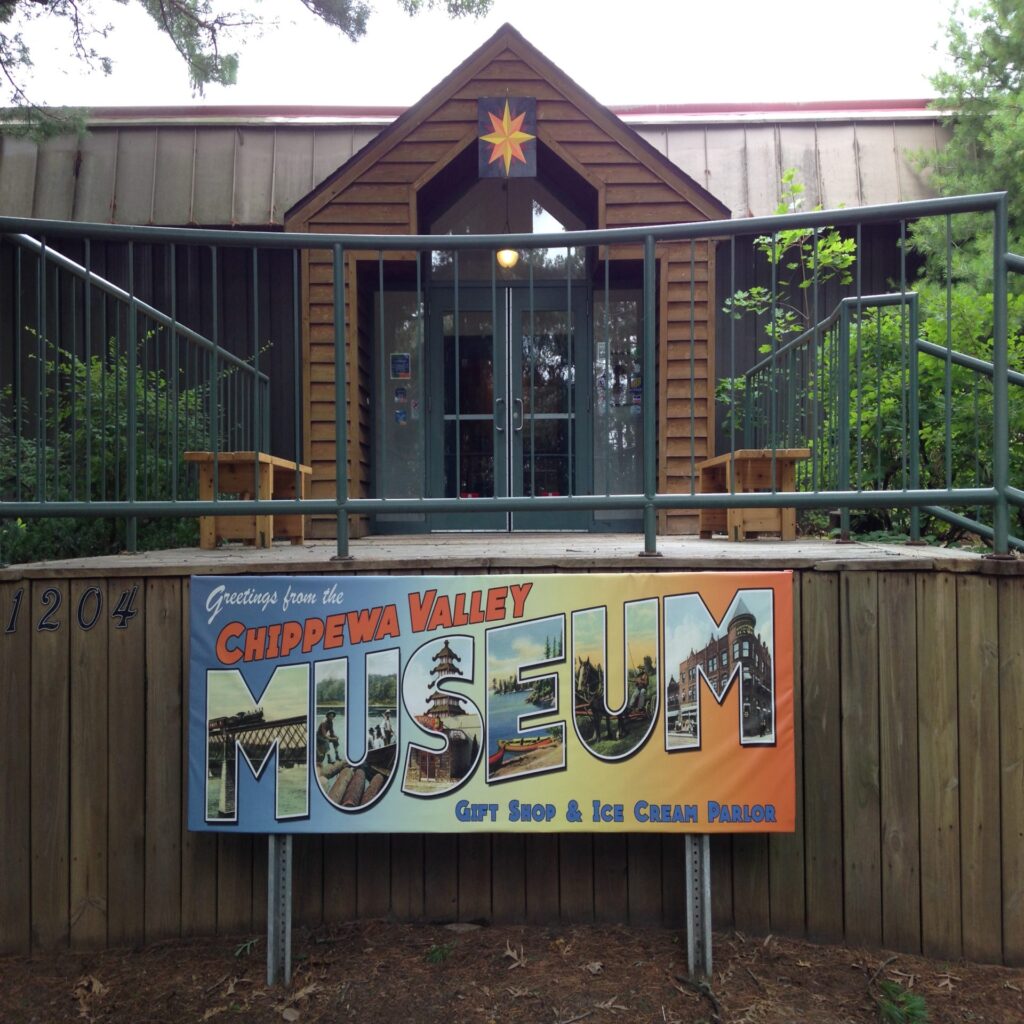
Kiffmeyer’s family history is deeply connected to Chippewa Valley community history, where her family has lived for six generations. Some of Kiffmeyer’s earliest memories include sitting on her grandmother’s lap begging to hear stories about her family’s past, inspiring a personally rooted interest in local history. Her experience also includes work in the archives of Barron County’s Pioneer Village Museum as part of Recollection Wisconsin’s Curating Digital Community Collections 2018 cohort as a practicum student. She now serves on the Pioneer Village Museum board and helps train their volunteers on digitization processes.
Kiffmeyer began work at CVM only four weeks before the COVID-19 pandemic swept across the country. When CVM closed to the public, staff shifted to working from home for several months. Along with taking time to learn much of her job from previously documented workflows and procedures, Kiffmeyer joined a collaborative effort to document the impact of COVID-19 on the Eau Claire community.
The Western Wisconsin COVID-19 Archive Project
In March 2020, Chippewa Valley Museum director Carrie Ronnander snapped a picture of a pandemic-related public sign, sent it to Kiffmeyer, and suggested that CVM start collecting similar artifacts documenting the area’s response to COVID-19. Serendipitously, Kiffmeyer had recently established contact with University of Wisconsin – Eau Claire (UWEC) Special Collections and Archives head, Greg Kocken. Kocken and UWEC history professor Cheryl Jimenez-Frei had a similar idea to initiate a rapid response collecting initiative regarding COVID-19 on campus and in the Eau Claire area, and a collaboration between the three entities was born.
The Western Wisconsin COVID-19 Archive Project’s goal is to “capture, preserve and share…stories and experiences — from the everyday to the extraordinary. This project aims to collect and archive photographs, oral histories, documents, visual artifacts and other media that document the story of how COVID-19 has impacted the region and its residents.” Using the Omeka-S platform hosted by UWEC, the entirely born-digital archive now includes 369 digital artifacts, 26 oral histories, and an Archive-It collection of 393 archived websites. Contributors to the archive can also choose a geographic location either for themselves or their artifact or both, and the locations are mapped on a page in the project website.
Kiffmeyer helped promote the archiving effort in the community through social media, including “challenges” to encourage submissions to the archive, word-of-mouth, and other grassroots communications. Some of the most interesting artifacts, like recordings of Stand In The Light Memory Choir’s Zoom rehearsals, arrived unsolicited. Kiffmeyer also identified community members willing to give oral histories of their COVID-19 experiences and accessioned items into the digital archive.
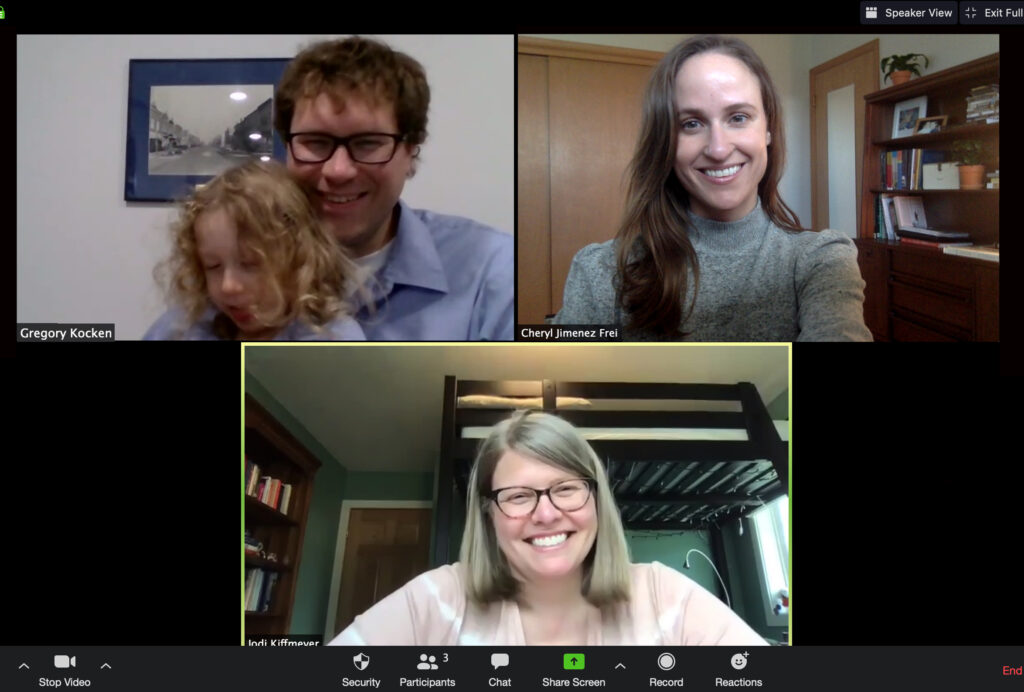
The process of collecting almost entirely born-digital materials (items created digitally, not converted from text/paper/analog formats) was a learning experience for Kiffmeyer and her collaborators. They designed a submission form to collect community-driven metadata in standardized formats so that each artifact would be easy to upload into Omeka-S. The submission form also includes detailed permissions and terms of use. Some contributors to the archive chose to keep their donations anonymous. Customization options encouraged a larger and more diverse community of contributors to the archive.
Collaboration among the three entities also increased their archives project reach. Jimenez-Frei’s public history class, originally scheduled to visit the UWEC archives during the semester, no longer had physical access to primary source material. Instead, students created and collected materials for the COVID-19 Archive Project including poetry, photographs, and oral history interviews, all of which they submitted to the Western Wisconsin COVID-19 Archive Project.
I’m really proud of the way our three entities have collaborated to make this archive project possible. – Kiffmeyer
Rapid response collecting required the collaborators to “go with the flow”. Because they needed to implement their collection development activities as quickly as possible, not every page, process or procedure was perfect or even complete in the beginning. Their previous collective experiences in managing digital collections’ permissions, digitization standards and procedures, creating and maintaining descriptive metadata, and making artifacts available for discovery helped keep the project on track even as it was being built. Collaboration was key to their success.
Oral Histories at CVM
Kiffmeyer also provides reference service for CVM, answering questions and providing research materials. Although CVM re-opened to the public (with distancing and mask-wearing rules) in July 2020, Kiffmeyer hasn’t been able to make use of their volunteer staff who typically handle the bulk of their digitization work. To meet patron needs, she digitizes oral histories on demand from the original audio cassettes. Using a simple cassette player, Kiffmeyer converts the audio and sends the recording to the researcher. While it’s not a perfect solution, for now it works, especially given the increased risk of cassette tape deterioration. In lieu of a fully-formed workflow, Kiffmeyer has been incorporating a few digital readiness best practices including using a simple spreadsheet to track her progress digitizing, preserving and sharing the recordings with researchers. Noting which recordings have been digitized to avoid redundant effort, continuing CVM’s digital file naming convention and saving the recordings on the same server as other digital files will make a future procedure easier to write.
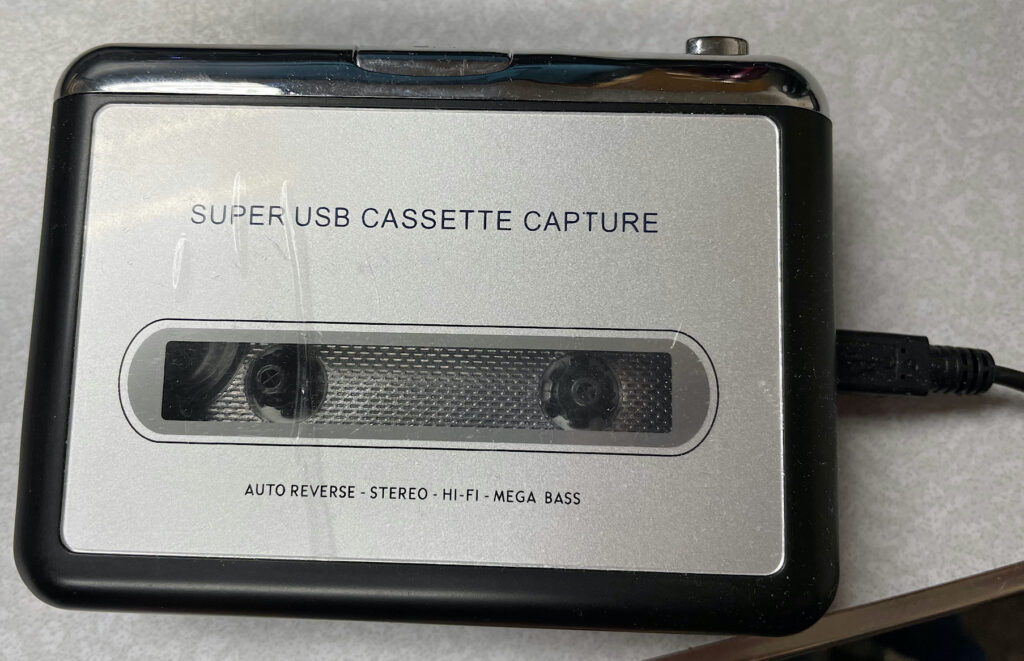
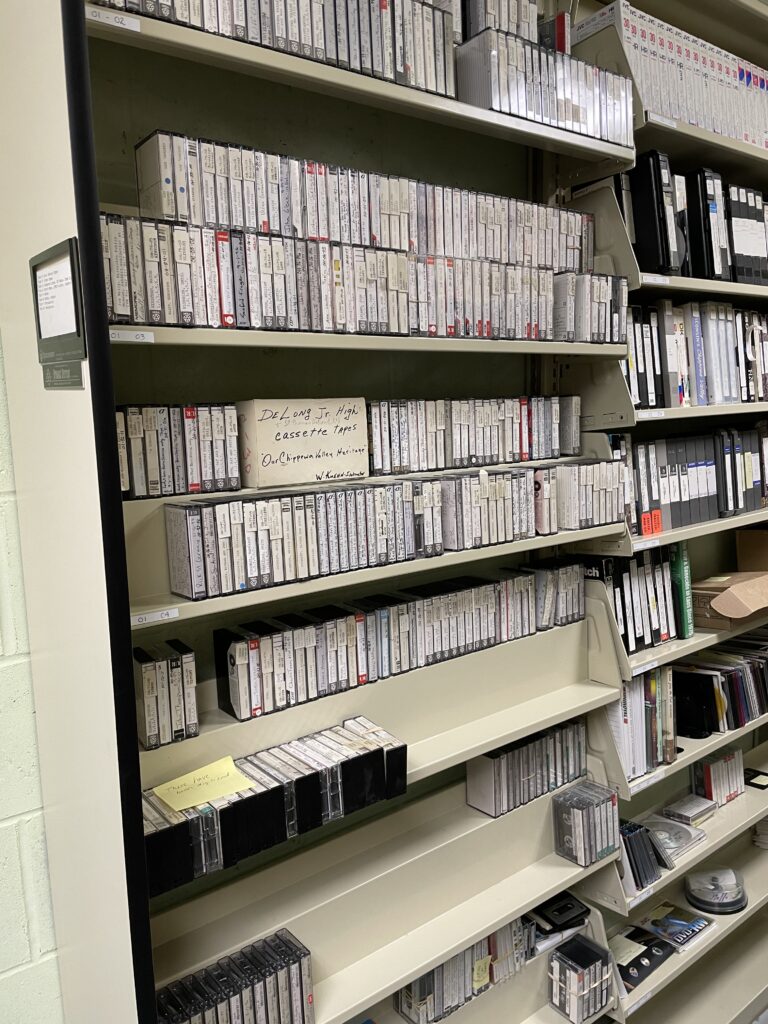
Workflows and documentation are key
Kiffmeyer champions the value of solid, detailed documentation, especially those which can be incorporated into an organization’s policies and procedures. Her predecessor, along with Ronnander, wrote simple, easy-to-use workflows for volunteers to digitize collection materials. For example, their photo scanning workflow effectively guides volunteers, step-by-step, through a digitization and uploading process. This documentation also helped Kiffmeyer train herself on various job duties while she worked off-site during 2020.
Digitization initiatives and progress
The Chippewa Valley Museum has approximately 20,000 digitized photos, several dozen digitized oral histories, and just a few digitized documents. Portions of the photo collections are available through the L.E. Phillips Public Library and Recollection Wisconsin. CVM has contributed 75 oral histories to Listening to War: Wisconsin’s Wartime Oral Histories, a National Endowment for the Humanities (NEH)-funded project which brings together first-person accounts of veterans and civilians in Wisconsin during World War I, World War II, the Korean War, the Vietnam War, and the Persian Gulf War.
Currently, there is no public-facing online catalog or collection for many of their digitized items. The digital files are saved on a CVM server. Kiffmeyer looks forward to exploring options for implementing an online, publicly accessible collection in the future. In her volunteer position with Barron County Historical Society, for instance, she’s helping facilitate the content partner relationship with Recollection Wisconsin. There, server space for digital collections is provided by the Milwaukee Public Library. Recollection Wisconsin’s service is a great solution for small cultural heritage organizations who want to share their digital collections publicly!
It will really help our workload once we have more digital photos available online for patrons to find on their own. -Kiffmeyer
Lessons learned
Collaboration is key! The three entities involved in the Western Wisconsin COVID-19 Archive Project came together to quickly launch a truly collaborative rapid-response archive. UWEC students conducted oral history interviews that Kiffmeyer nor the Chippewa Valley Museum staff would not have had time to conduct, and UWEC hosts the collection on their server space. A digital collection development trifecta!
Organization and project planning? Equally important! Kiffmeyer wishes she would have had time to properly plan for the oral history digitization efforts before digitizing on demand.
It wasn’t until I digitized a few oral histories that I realized I had a project on my hands! – Kiffmeyer
COVID-19 restrictions meant that CVM’s volunteers couldn’t undertake the digitization work they normally would, and Kiffmeyer’s hours were even more limited than usual. Although it wasn’t possible to write a detailed project plan at the time, this experience provided a valuable lesson for future project work. Kiffmeyer told us that having workflow templates, checklists, or other “plug and play” tools would have helped at the time. The Digital Projects Planning Worksheet will help kickstart digital project planning.
Training and hands-on experience. Kiffmeyer’s previous experiences working with CCDC and other experts have provided a strong foundation for her current work. Her digital readiness community of practice includes colleagues and peers from her educational programs, supervisors, mentors and staff from local history organizations — her “go to” people when she has a question or an idea to brainstorm. The opportunity to “learn by doing” in a supportive and collaborative environment generates informal, invaluable networks of peer practitioners; it’s these experiences and wider networks that the Digital Readiness Community of Practice is helping to create throughout Wisconsin. You can join the community of practice too! Visit digistew and click “Ask to join group” at the top of the page to be added to this listserv.
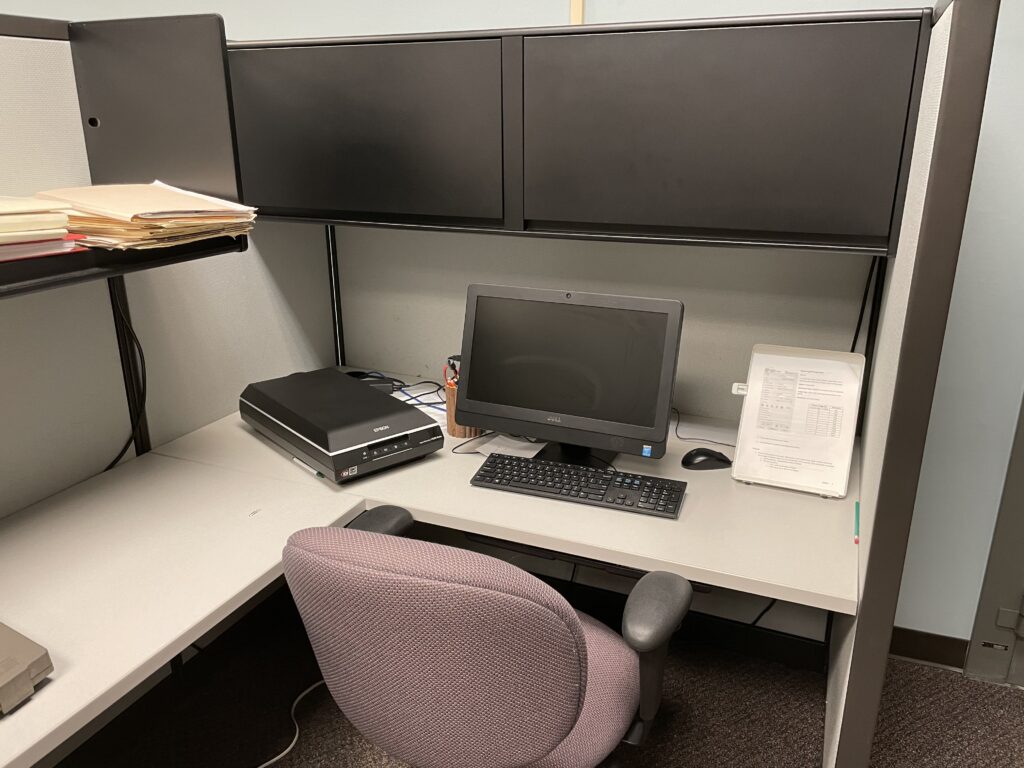
Volunteers are a force of nature! We’re not saying anything new here but it’s worth repeating… volunteer staff contributions are essential to sustaining and growing digital collections. CVM currently has a backlog of photographs, donated during the pandemic, waiting for volunteers to return and do their digitizing magic. Kiffmeyer, herself, is a part-time staff member, and temporarily reduced her hours even further in 2020. She depends heavily on dedicated and engaged volunteers to scan and describe digitized photos. Kiffmeyer has found that the best workflows are written in collaboration with the volunteers who will be using them. The collaboration not only makes for a better workflow, it engages volunteers and gives them insights into the digitization process too. Check out our Digital Projects Toolkit post on engaging volunteers for more tips and info.
In my experience, volunteers of all ages want to participate in photo scanning projects. We miss out by assuming any age groups won’t want to work with technology. – Kiffmeyer
What’s next?
- CVM will soon write and implement a plan for a more robust digital storage setup. They have archival and access copies of digital items stored on site now, and will expand storage options to have off-site and cold storage. (See an example of a 3-2-1 Storage Policy here.)
- Kiffmeyer plans to organize and better document the digitization status of CVM’s oral histories including which interviews have been digitized and which have not, and adding descriptive metadata to recordings for easier reference.
- A potential future donation to CVM involves a large collection of glass plate negative images of Chetek from an Eau Claire family. Kiffmeyer hopes to digitize the images and have them publicly available through Recollection Wisconsin, perhaps through a grant-funded initiative.
- Save the date! Kiffmeyer will give a talk on the COVID-19 Archive Project on April 27 at 6:00 pm. It’s free, virtual, and open to the public; click here to register! The presentation will be recorded and we’ll update this link when the recording is available to view.
- Save another date! Kiffmeyer, Greg Kocken and Cheryl Jimenez-Frei will present on the Western Wisconsin COVID-19 Archive Project at the Midwest Archives Conference on May 13, 2021.
Our sincere thanks to Jodi Kiffmeyer and the Chippewa Valley Museum for sharing their experiences with our digital readiness community of practice.
Just the highlights? Download the Center’s Digital Readiness Case Study in Brief (PDF).
*****
This work is funded through an Archives Collaboratives Implementation Grant from the National Historical Publications and Records Commission (NHPRC), the granting arm of the National Archives. Visit Digital Readiness Community of Practice for more information.



You must be logged in to post a comment.